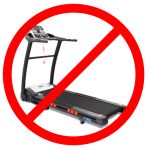If manual processes and dropped balls are crippling your health club or corporate wellness sales growth, CRM may be just the fix you need. But if you’re still figuring out a marketing plan that matches your wellness center’s business goals, CRM may be a train wreck. These questions help you decide whether your wellness business actually needs CRM — or whether it’s the right tool at the wrong time.
What is CRM?
Customer relationship management software — CRM — typically blends marketing automation tools with customer service tools to give you a 360-degree view of your customer relationships and ensure consistent and timely action on everything from lead generation to handling customer complaints. It lets you:
- automate key steps in your sales, marketing and customer service processes
- monitor customer behavior at key points in that process, allowing you to then initiate the next step in your marketing sequence
- see a 360-degree view of your interactions with each customer — from initial contact to membership to renewal to billing complaint to requests for a new class.
For example, during the pre-sales phase, CRM makes it easy to consistently track and follow up with all prospects per your defined sales and marketing processes. If you want to make sure that everyone who visits your corporate wellness site and downloads an employee engagement whitepaper then gets an invitation to an executive briefing webinar on corporate wellness trends, CRM is a great way to automate that process.
And post-sale, CRM tools can help you respond timely and consistently to customer service issues. For example, if you want to send an apology from the member’s club manager to every member who reports a service issue, CRM can ensure that this happens every time, without fail.
And best of all, these tools provide aggregated data and reports to management so that the company can measure and improve all of these processes.
Popular cloud-based “software as a service (SaaS)” tools like Salesforce.com, SugarCRM, and Oracle’s Customer Experience Suite (formerly RightNow) offer feature-rich CRM solutions that can grow to support the largest, most complex businesses. For small businesses, platforms like Zoho, ZenDesk and NetSuite offer CRM capabilities that are already integrated with their billing, service and accounting capabilities. There are also health and wellness-specific CRM platforms, although we tend to avoid those because their features tend to fall behind.
All of these vendors offer month-to-month pricing options which typically vary depending on your activity levels and the features you use, putting CRM within reach of small and medium wellness businesses yet offering scalability as your business grows.
So the good news is that these days, CRM’s affordable and fairly easy to implement for even smaller businesses.
The most important question, however, remains: Do you actually need a fully integrated CRM solution? Or will a marketing automation tool like MailChimp or Hubspot be a better fit for your health club, wellness center or yoga studio?
Ask yourself these critical questions:
Do you have a structured marketing plan aligned with business goals?
If you have a fairly well-established marketing process, with a clear sequence of steps that you use to reach potential customers and turn them into members, CRM offers numerous opportunities to improve your operations, including automation and streamlining of manual processes. For example, if you want to target your corporate wellness sales outreach to only those prospects who have attended an employee engagement webinar and downloaded a white paper on corporate wellness trends, CRM is your best friend.
If you’re still figuring out your marketing messages and key process steps, hold off on CRM. If you can’t lay out your sales and marketing process on a whiteboard, you’re not ready for a CRM tool. Signing up for CRM before you’ve even got the basics figured out is like buying a power tool when you can’t even use a hammer. You don’t have the skills to use the tool, and someone’s gonna get hurt.
Do you sell to businesses or consumers?
B2B sales — like corporate wellness — often benefit from CRM because it’s a fairly complex sale with numerous steps and a long list of stakeholders. CRM tools are a great way to enforce process discipline on your sales staff and deliver the right messages and content at the right time to your prospect, based on their actions. And if you’re providing services to employees across the U.S., CRM tools give you the ability to track and report contacts across multiple locations so that you can provide utilization reports to your client.
On the other hand, small B2C wellness businesses often don’t need traditional CRM capabilities.
Most of their client growth is driven by word of mouth referrals, email and online reviews. They have neither the need nor the ability to do sophisticated behavioral marketing, and their customer service issues are typically very brief transactions handled with a single quick email, phone call or visit.
CRM’s at its best when handoffs between departments are involved. It can quickly turn into unnecessary overhead for smaller businesses. Until you grow to multiple locations or expand departments to more than a single person, a tool like MailChimp may be all you need for marketing automation, and you probably don’t need a special tool to efficiently and promptly resolve post-sales customer service issues and spot customer service process improvement opportunities.
What problems are you trying to solve?
Is your marketing one size fits all, treating prospects and long-time customers as if they have the same interests? You’re sending membership upgrade promotions to folks who haven’t even joined yet, and “try us for a week” promos to long-time members? CRM can help you solve this problem by making it much easier to tailor your marketing to different customer segments. Now, you still have to know what you want to say and do with each segment — but CRM automates the process once you figure out those strategic questions.
On the other hand, perhaps you’re hearing complaints that your wellness center has lost what made it special, warm and inviting.
If your staff is constantly turning over due to a lack of advancement and inept supervisory practices, CRM won’t help. You need to fix your HR practices and hire better supervisors. No software tool in the world will solve this problem; it’s a management issue. If your health club feels less welcoming because your staff doesn’t put out as many fresh towels as before, the problem could be operational (staff turnover led to service backlogs) or it could be a problem with how you communicate the reasons for service reductions (it was either cut back towel service or raise prices). CRM can streamline communications, but it won’t fix service problems.
Do the problems lie within sales, marketing, program delivery and customer service, or among them?
CRM’s strength is that it brings together the data and processes that connect different parts of your organization to your prospects and customers. For example, you can track how quickly your sales team responds to email and phone inquiries, and determine whether corporate wellness prospects are likelier to schedule a sales meeting after they attend a webinar on increasing employee engagement.
But it’s up to you to do something with that information. For instance, your CRM reports may tell you that online customer surveys revealed dissatisfaction with the way you handle calls to cancel memberships. It’s up to your management team to actually dig into that dissatisfaction, figure out how to fix the process across all of the departments that touch it, and then measure process efficiency and customer satisfaction after the change.
On the other hand, if the problem is that your departments aren’t playing nicely with each other, CRM won’t fix anything. It’s just the next thing everyone in your business will complain about.
Do you have strategic or operational problems?
Business growth often results in fair amount of gear-grinding between sales, marketing, program delivery, and customer service, as each part of your organization struggles to optimize its own performance independently. Marketing wants to reach more prospects, but management is getting negative feedback about crowded classes and wait times for cardio equipment. Sales wants to close more leads, but prices are too high for local markets because the company wants to fund expansion.
Will CRM fix problems like these? No. CRM provides you with a set of tools that enable cross-departmental process improvements, and analytics for measuring the success of your efforts. It doesn’t solve strategic problems, like how to raise money for expansion or how to set prices.
Can CRM deliver financial benefits to your wellness business?
You’ve got a good-sized email list. You’re executing a structured marketing plan that includes email newsletters, webinars, social media, and frequently updated case studies, whitepapers and videos. But you still can’t tell when someone’s getting closer to a purchase, and as a result you’re almost certainly missing opportunities. Tying together your marketing and sales processes with CRM will likely improve your bottom line results.
Are you able to solve the problem manually?
CRM can help address numerous problems stemming from disconnected data and processes. And it can provide tools to leverage that information once it’s been brought together, including marketing and sales automation, customer service management, and in-depth reporting. Yet the failure rate of CRM projects has hovered around 70% for the last ten years. Some wellness businesses implement CRM and prosper. For others, it’s just another complicated and expensive boondoggle that nobody uses.
Take a look at how you identify your target prospects, reach them with your message, acquire them as sales leads, and bring them on board as customers. Do you have a clearly defined process? Can these steps be automated without losing something critical? If your team understands the current process, knows what needs changing, can do it manually, and can sketch the process out on a whiteboard, then CRM can automate some of those manual processes and help you find even more opportunities for improvement.
On the other hand, CRM can’t fix a haphazard or broken process that’s out of alignment with your business goals. And it can’t resolve interdepartmental squabbles. If these are the problems you face, you’re heading towards a train wreck. CRM in this environment will simply increases the cost and complexity of the train wreck.




